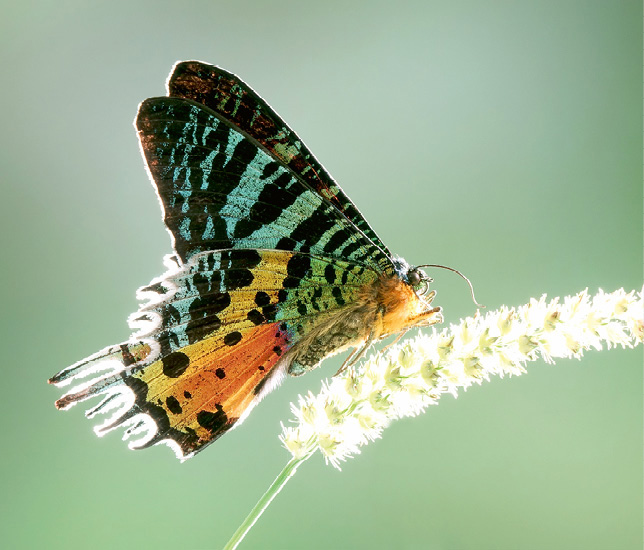Introduction
Across the great and varied sweep of life on Earth, insects stand out as one of the greatest success stories. Most invertebrate animals live in the oceans and fresh waters, but insects have truly conquered the land, and (as the only winged invertebrates that have ever lived) they have also mastered the air. This mastery comes courtesy of a basic anatomy that meets the challenges of life out of water, and thanks also to countless anatomical modifications that allow insects to thrive in so many different habitats and ecological niches.
For all their fabulous variety, insects have the same fundamental body-plan, which allows them to be recognized at a glance. The segmented body has three distinct sections: the head, the thorax, and the abdomen. There are six legs and (usually) two pairs of wings attached to the thoracic segments, and there are obvious eyes and various sensory and feeding appendages on the head. Whether the insect crawls, runs, climbs, or hangs, whether it flies with a rattling zoom, a buzz, or a flutter, whether it hunts prey, chews leaves, or sucks nectar (or blood), it does so with its own version of the same physical equipment that first evolved more than 350 million years ago.

A spectacular Spiny Flower Mantis exhibits its eye-spot wing markings, to startle a predator.
One of the keys to insects’ success in the open air lies in their outer covering—a waxy cuticle that helps prevent their tiny bodies from dehydrating. To take oxygen from the air, they use spiracles—breathing apertures in the body-segments, which take in air passively and can be opened and closed as needed. Instead of blood contained in vessels, they have free-flowing hemolymph, which helps keep their bodies rigid, aids movement, and assists the transportation of nutrients and waste materials to the appropriate parts of the body. The nervous system is modular—in a sense, each of the body segments has its own individual and autonomous brain—and some other body systems show a similar modularization. These are just a few of the many ways in which insect bodies are structured and function completely differently from our own, though it is the process of complete bodily metamorphosis, from wormlike larva to winged adult, that astounds us most of all.

The male Stag Beetle is a fighting machine—his huge jaws are for wrestling a rival rather than biting.
endless forms most beautiful
There are well over a million species of insects known to science today, and probably many more that are as yet undiscovered. They have adapted to live on every continent and in every kind of environment, fulfilling an array of ecological roles. Some are our constant companions—a few are even domesticated for our use—and others are our sworn enemies, but the vast majority are almost unknown to most of us. This book aims to unravel the mystique of insects—how their bodies work, how they lead their lives, and how deeply and completely the lives of other organisms on Earth (including ourselves) depend on them.

The Madagascan Sunset Moth is noted for its long migrations as well as its dazzling colors.